随着分布式光伏的快速发展,部分地区分布式光伏装机比例高的地区,出现电网接入和消纳受限的问题。分布式光伏的装机规模可能会达到电网承受极限,在电网承载力未得到有效改善前,当地电网是否可以暂停新增分布式电源项目接入?
在电网承载力未得到有效改善前,当地电网公司可以采取以下四项措施,实现分布式光伏“应接尽接”!
1)电网企业应加强配电网升级改造,努力做到应接尽接;
4)对超过电网企业保障性并网规模以外的新增装机,也可配建或购买调峰和储能能力。

因受前期光伏补贴政策的影响,供电辖区内群众投资建设分布式光伏项目积极性高涨,光伏电站扎堆新上,造成35kV变电站接入光伏容量严重超标,已造成上级电源220kV变电站出现反向供电。 为保障辖区内广大居民的可靠安全有序用电,是否可以依据国家能源局发布的《分布式电源接入电网承载力评估导则》(DL/T2041-2019)第9条.电网承载力等级划分中9.4评估区域内因分布式电源导致向220kV及以上电网反送电,该区域评估等级应为红色及表1评估等级划分中红色建议:
在电网承载力未得到有效改善前,暂停新增分布式电源项目接入的相关要求, 暂停35kV变电站供电范围内新建分布式光伏电站(包括村集体分布式光伏电站、工商业分布式电站及户用分布式光伏电站)项目备案的办理和接入工作?
随着光伏安装容量的增大,变电站变压器出现故障的可能性升高,出现大面积停电的概率增大,因此光伏的并网接入应在满足广大居民安全有序用电的基础上进行,目前国家政策是光伏安装按照“应接尽接”的原则,但是部分地区电网已达到承受极限,如何规范地方光伏安装目前没有任何针对性的政策,同时电网建设需要相关部门审批周期较长,在保证居民正常用电和光伏并网应接尽接中存在矛盾,如何选择现在相关部门存在争议。在地区电网无法承载光伏并网的情况下,是否可以按照《分布式电源接入电网承载力评估导则》中的规定: 在电网承载力未得到有效改善前,暂停新增分布式电源项目接入。
分布式光伏有利于消减电力尖峰负荷,有利于节约优化配电网投资,有利于引导居民绿色消费,国家积极支持开展相关工作。
电网企业应充分考虑分布式光伏大规模接入的需求,加强配电网升级改造,努力做到应接尽接。
分布式光伏接入电网可参考《分布式电源接入电网承载力评估导则》(DL/T 2041-2019)(以下简称《导则》)。根据《导则》规定,“…因分布式电源导致220kV及以上电网反送电”的,评估等级为红色。应“在电网承载力未得到有效改善前,暂停新增分布式电源项目接入”。
对于在附近台区有消纳条件的,
电网企业可增容或新建配电变压器; 对于装机超过局部电网承载能力的,
电网企业可采取适当反送电措施, 为分布式电源提供并网服务。同时,根据《国家发展改革委
国家能源局关于鼓励可再生能源发电企业自建或购买调峰能力增加并网规模的通知》(发改运行〔2021〕1138号),对超过电网企业保障性并网规模以外的新增装机,
也可配建或购买调峰和储能能力, 以提升新能源并网规模。
《分布式电源接入电网承载力评估导则》(DL/T 2041-2019)
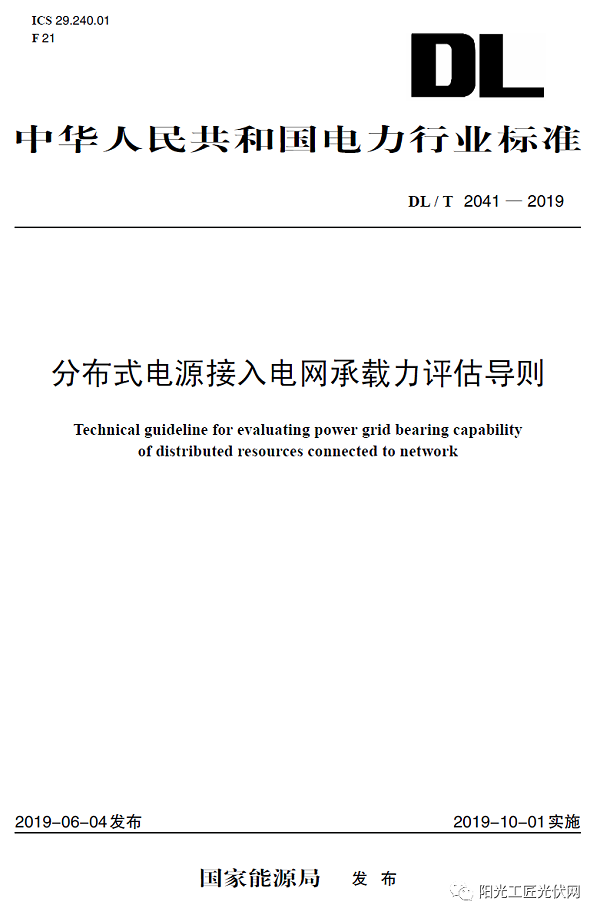

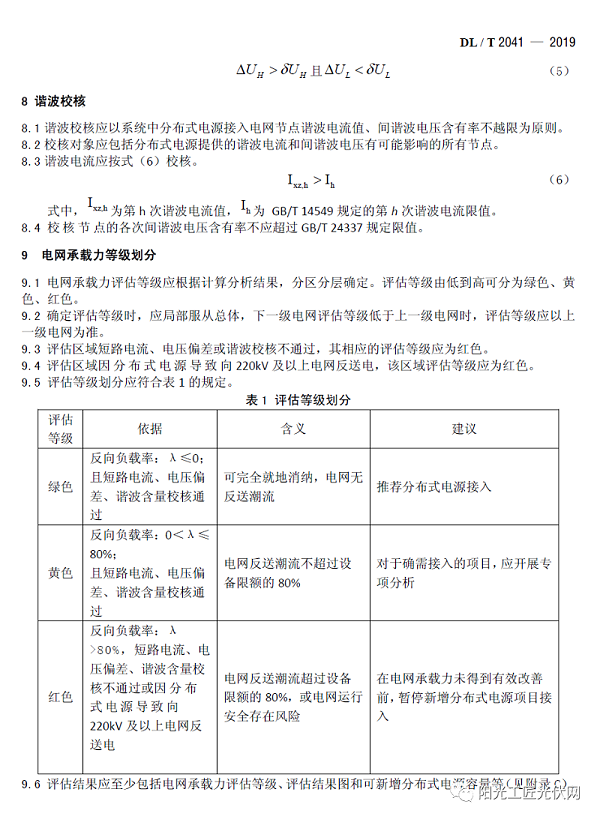


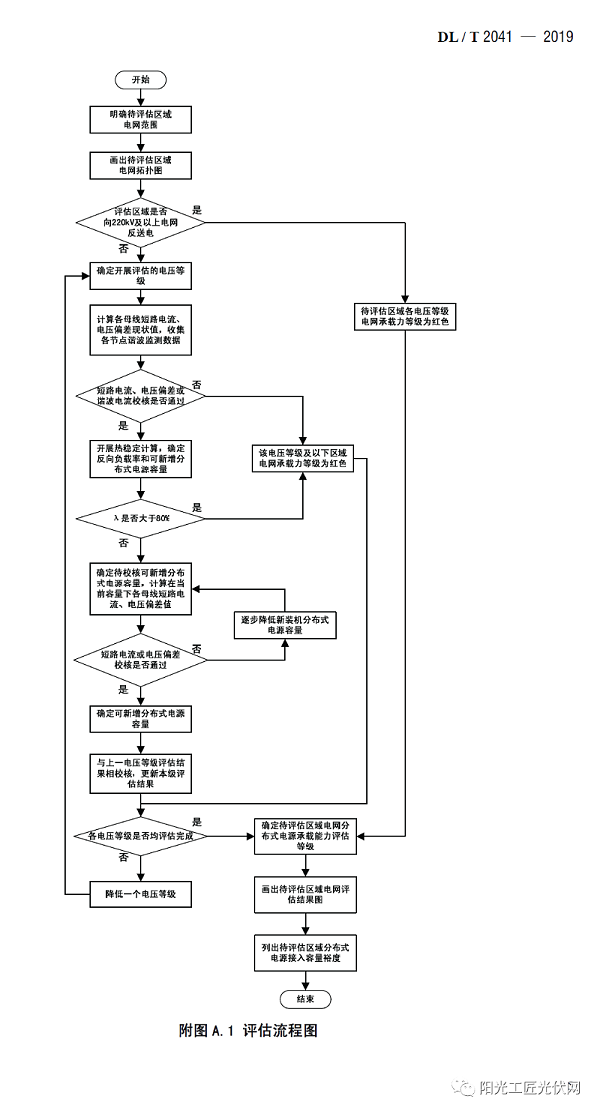

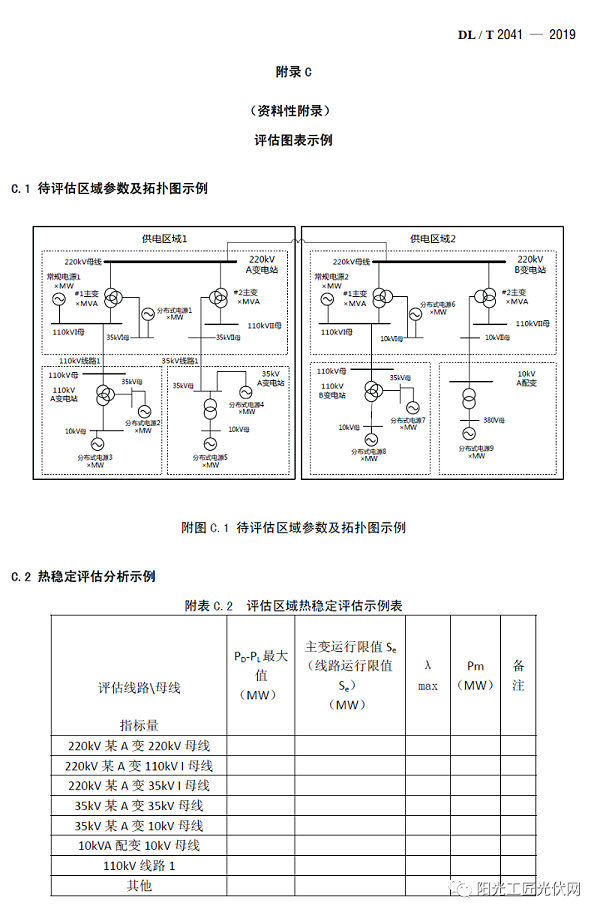
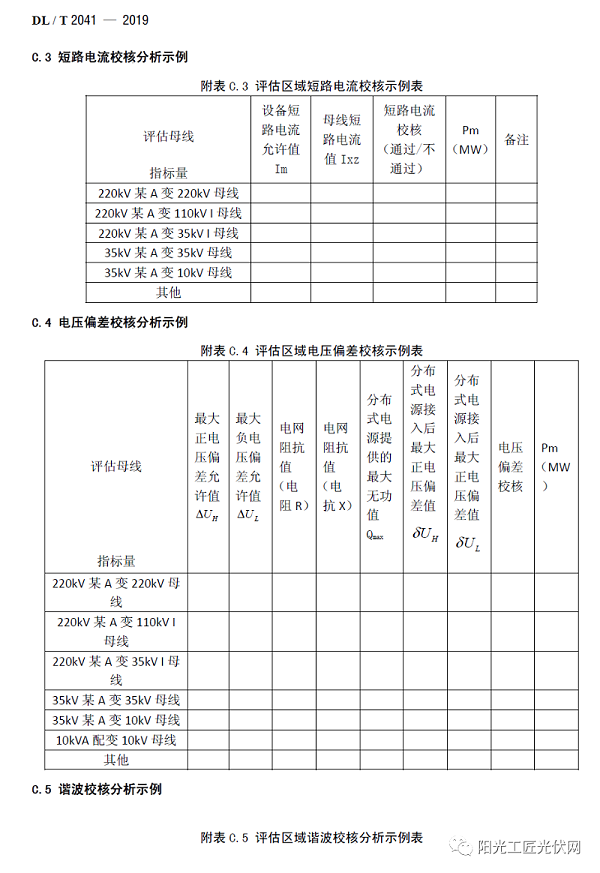
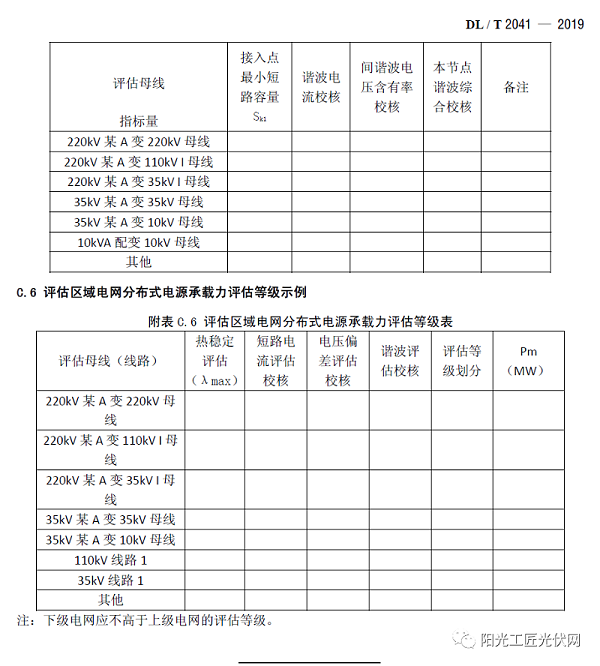
特别声明: 星火太阳能
转载其他网站内容,出于传递更多信息而非盈利之目的,同时并不代表赞成其观点或证实其描述,内容仅供参考。版权归原作者所有,若有侵权,请联系我们删除。
With the rapid development of distributed photovoltaics, some regions with high installed proportion of distributed photovoltaics have encountered problems of limited grid access and consumption. The installed scale of distributed photovoltaics
may reach the maximum capacity of the power grid. Can the local power grid suspend the connection of new distributed power projects until the capacity of the power grid is effectively improved?
In response, the National Energy Administration
clearly replied:
Before the load-bearing capacity of the power grid is effectively improved, the local power grid company can take the following four measures to achieve distributed photovoltaic "should be connected as soon as possible"!
1) Power grid enterprises should strengthen the upgrading and transformation of distribution networks, and strive to achieve full integration as needed;
2) Power grid enterprises can increase capacity or build new distribution transformers;
3) Power grid enterprises can take appropriate anti transmission measures,
4) For new installations beyond the guaranteed grid connection scale of power grid enterprises, peak shaving and energy storage capacity can also be built or purchased.
Question:
Due to the impact of the early photovoltaic subsidy policy, the enthusiasm of the people in the power supply area to invest in the construction of distributed photovoltaic projects has increased. Photovoltaic power stations have piled up
and new ones have been added, causing the photovoltaic capacity of 35kV substations to seriously exceed the standard, and causing reverse power supply to the higher-level 220kV substations. In order to ensure the reliable, safe, and orderly use
of electricity by the residents within the jurisdiction, can it be based on Article 9 of the "Guidelines for Evaluating the Carrying Capacity of Distributed Power Sources Connected to Power Grids" (DL/T2041-2019) issued by the National Energy
Administration? According to 9.4 of the classification of power grid carrying capacity levels, in the assessment area, distributed power sources can cause reverse power transmission to 220kV and above power grids, The evaluation level of this
area should be in red, and the red suggestion in Table 1 is to suspend the relevant requirements for the connection of new distributed power generation projects and the filing and connection of new distributed photovoltaic power stations (including
village distributed photovoltaic power stations, industrial and commercial distributed photovoltaic power stations, and household distributed photovoltaic power stations) within the power supply range of 35kV substations until the carrying capacity
of the power grid is effectively improved?
With the increase of photovoltaic installation capacity, the possibility of transformer failures in substations increases, and the probability of large-scale power outages increases. Therefore,
photovoltaic grid connection should be carried out on the basis of meeting the safe and orderly electricity consumption of the majority of residents. Currently, the national policy is that photovoltaic installation should follow the principle
of "should be connected as soon as possible". However, some regional power grids have reached their limit, and there is currently no targeted policy on how to regulate local photovoltaic installation, At the same time, the construction of the
power grid requires a long approval period from relevant departments, and there is a contradiction between ensuring the normal use of electricity by residents and the complete connection of photovoltaic power grid. There is controversy over how
to choose the relevant departments at present. In the event that the regional power grid is unable to support photovoltaic grid connection, can the provision in the "Guidelines for Evaluating the Carrying Capacity of Distributed Power Grid Connection"
be followed: suspend the connection of new distributed power projects until the carrying capacity of the power grid is effectively improved.
Message time: July 29, 2022
Reply from the National Energy Administration:
Distributed photovoltaics are beneficial for reducing peak power loads, saving and optimizing investment in distribution networks, and guiding green
consumption among residents. The state actively supports related work. Power grid enterprises should fully consider the demand for large-scale access to distributed photovoltaics and strengthen the upgrading of distribution networks










